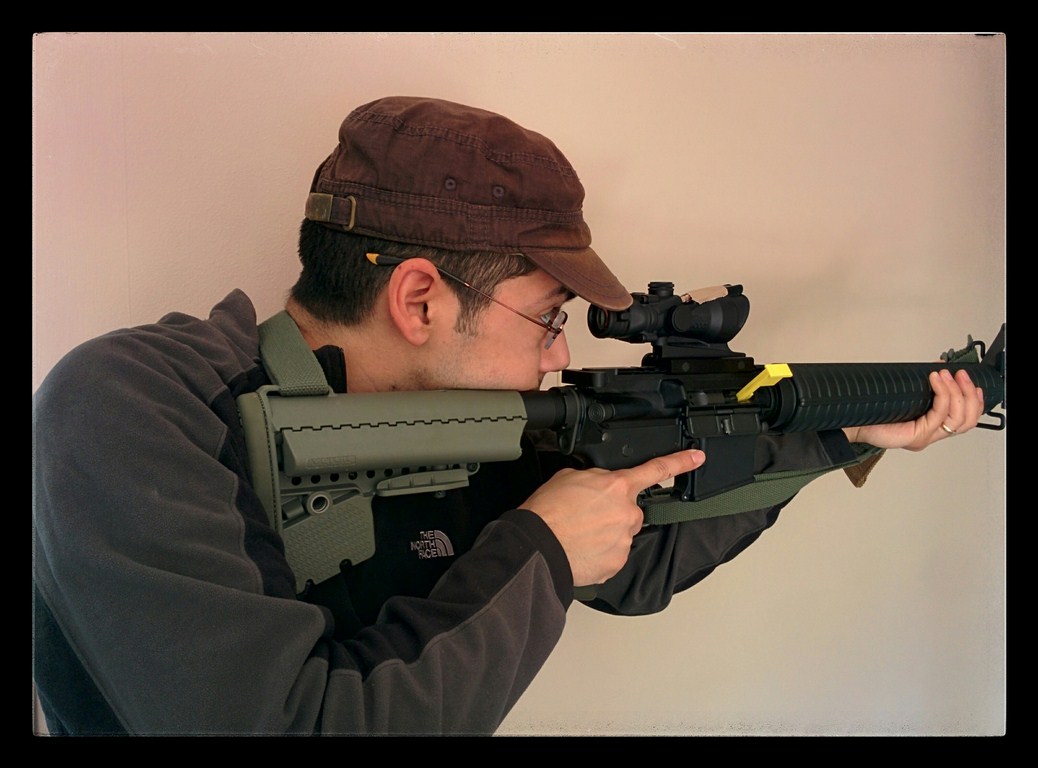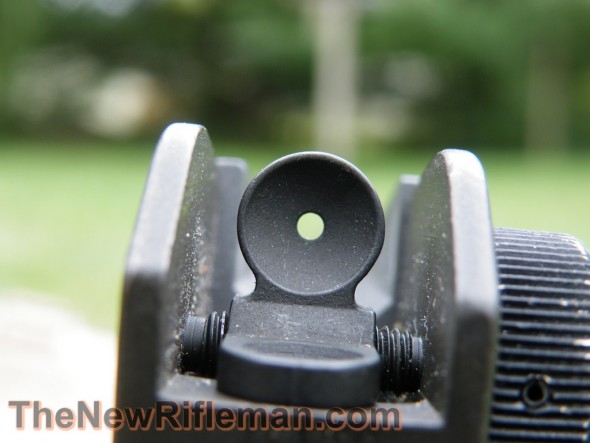We like to think of the AR15 as an ergonomic weapon. It is… but those ergonomic advantages are lost on many shooters, especially new shooters, after they set up their gun for comfort.
I came across this video the other day:
All respect to the soldier and his skill, but take a look at the rifle bouncing around. Look at the use of the toe of the M4’s butt-stock. The advantages of the AR15’s “in-line-design” are lost with the soldier’s firing technique. He may just be fooling around on the range, or perhaps he is really working a few targets. All good, and again, all respect for the individual because I don’t know the back-story of this video, but we can see lots of muzzle flip due to the technique being used. Can you visualize his red dot jumping all over his visual field? I can.
Not A Pillow
The rifles butt-stock is not a pillow for your face. Every point of contact that you have with the weapon is a point of weapon control. Many new shooters will adjust accessories for comfort: they will place a red dot on the gun and then adjust the stock so that everything is ergonomic for them… typically this means they will use the toe of the stock to mount the weapon so they don’t have to crane their neck down into the optic or sights.
It may be comfortable to bring everything up without having to move your head, but we don’t want to develop sloppy shooting technique by what is comfortable. We want control.

- Adjusted to comfort with poor recoil management. The recoil reduction benefits of the AR15’s “in line” design are lost in this example. Recoil forces go over the shoulder and enhances muzzle flip.
Take a look at my rifle. Over the years of shooting I have learned the above… adjusting the rifle to your comfort is not always advantageous for your shooting. My current knowledge and use of the rifle dictates that I mount the optic (in this case an ACOG) further down the rail and extend the butt-stock a few clicks out.

Here I have positioned the ACOG to force a “nose to charging handle hold”. By craning the neck forward i can place the entire butt-stock in the shoulder pocket to manage recoil.
When I shoot my rifle like this, I have to crane my neck down into the weapon to get a proper sight picture through the ACOG.
With the stock a few clicks out, I have to force the weapon into my shoulder pocket.
This shooting technique is not comfortable, but it controls the rifle and recoil comes straight back to the shoulder instead of over the shoulder. Further recoil is suppressed by my face forcing the rear of the gun down. Set up as it is, I must support a good shooting technique to even acquire the sights. The short eye relief of the ACOG further forces my face in a *specific place* on the rifle. If you are using a red dot, adjust your stock and force yourself to use the nose to charging handle technique.
Learning As You Go
The great thing about sticking with something is that you can really appreciate your skill as you reach for excellence. So many people have helped me along the way that I have lost count. From blog suggestions to firing techniques at the range… I have learned to shoot my AR’s better because I have placed myself in the company of shooters.
Spending your time in the company of shooters, both online and at the range, will propel your skills forward. As I learn more and gain in skill, I have come to fully appreciate the knowledge of these guys i have met both online and offline.
Appreciate it Gentlemen.









Showing this post to my wife caused some lights to go on. Thanks!
Just to shed some light on this: part of the reason the shooter is shooting like that is the stance. We are taught in the military to shoot squared up to a target, that way an unlucky incoming round strikes the chest plate. If you take a rifle round to the soft sides of the armor, it’s usually bad news. Not that it’s good news either way, but I’d rather take a hit in the plate as opposed to a hit on the kevlar-covered velcro straps on the sides. This is not something your typical civilian shooter will ever have to worry about.
He’s also shooting an M4, which with the shorter gas system tends to jump around a bit more violently than an M16.
Shooting squared up like that, and adding an inch or so worth of extra padding on the shoulder from armor, necessitates the odd-looking stance, which lends itself to a bit less control when it comes to muzzle flip. You typically either learn to deal with it, or come up with your own technique to help keep the rifle steady.